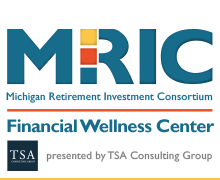Roth IRA Conversion Review

If you have existing retirement assets in a traditional IRA, you may want to consider converting those assets to a Roth IRA – also known as a backdoor Roth IRA. Possible benefits of converting include tax-free distributions at retirement, no required minimum distributions at age 70 ½, and leaving income tax-free assets to your heirs in the event of your death.
While Roth conversions are not subject to early distribution penalties, they are subject to income tax on any untaxed amounts from your traditional IRA to your Roth IRA.
 Your tax-free potential is maximized if you pay the taxes from your current income or personal savings, not your IRA. Make sure you have the cash to pay the taxes required to convert to a Roth IRA.
Your tax-free potential is maximized if you pay the taxes from your current income or personal savings, not your IRA. Make sure you have the cash to pay the taxes required to convert to a Roth IRA.
Assets converted to a Roth IRA must be invested for at least five years before taking distributions or a significant income tax penalty may apply.
In years past your income needed to be under $100,000 to convert a Traditional IRA to a Roth, however, those rules have changed and there is currently no income cap in place. Anyone is now able to convert regardless of their income or filing status, but remember that this process cannot be undone. Be sure to look at all your potential gains and losses when making this decision.
Material discussed is meant for general illustration and/or informational purposes only and it is not to be construed as tax, legal, or investment advice. Although the information has been gathered from sources believed to be reliable, please note that individual situations can vary therefore, the information should be relied upon when coordinated with individual professional advice.
Article from CalcXML.com
